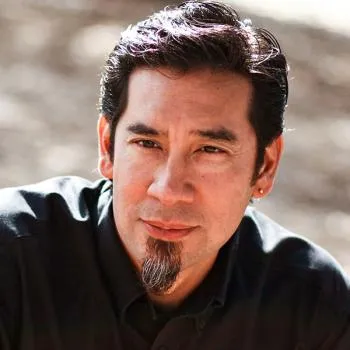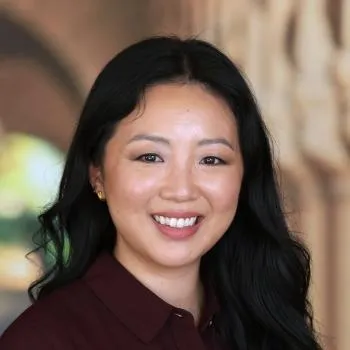
After the Supreme Court rulings, what’s next for affirmative action?
Sometime in the next few weeks, the U.S. Supreme Court will rule on two cases challenging affirmative action in college admissions. With its conservative majority, the court is widely expected to ban colleges and universities nationwide from considering race as one factor in reviewing and admitting applicants.
One of the cases argues that Harvard University violates Title VI of the Civil Rights Act of 1964, which bars institutions that receive federal funding from discriminating based on race. The other alleges that the University of North Carolina violates the equal protection clause of the 14th Amendment, which bars racial discrimination by government entities. The plaintiff in both cases is an organization called Students for Fair Admissions (SFFA), created by the conservative legal strategist Edward Blum, who has been campaigning against affirmative action for decades.
Given the anticipated rulings putting an end to the practice, how can colleges and universities work to build a diverse student population? Could a ban on race-conscious admissions have a chilling effect on other efforts to support diversity on campus?
Anthony Lising Antonio is an associate professor at Stanford Graduate School of Education (GSE) whose research focuses on equity issues in American higher education; his work has been cited in amicus briefs submitted to the Supreme Court for a number of affirmative action cases over the past two decades. Eujin Park is an assistant professor at the GSE whose research examines how Asian Americans negotiate with race in educational institutions.
Here, they talk about what’s at stake for students and universities, and why race in particular has become a legal target in campaigns to promote “fairness” in college admissions.
Nine states, including California, already ban affirmative action at public universities, and institutions in these states have tried various alternatives to promote racial diversity. What effects have we seen?

GSE Associate Professor Anthony Lising Antonio
Anthony Lising Antonio: For Black, Latinx, and Native American students, there were initial precipitous drops in both applications and acceptances in these states. We’ve seen some rebound in Texas and California in numbers for the Latinx populations, but that appears largely due to their growth in those states. As representation grows in the general population, you’d expect it to grow among college applicants and admissions, which seems to be happening. But the racial gaps remain. Underrepresentation of Black, Latinx, and Native American students continues to be a serious problem at universities across the nation.
In terms of alternative policies, we’ve seen expanded recruitment efforts, class-based affirmative action (giving preferences to low-income applicants), and “top X percent” plans that grant admission based on class rank in high school. But research shows that none provide the same kind of equitable access that race-based affirmative action provides.

GSE Assistant Professor Eujin Park
Do you expect a ban on race-conscious admissions could affect other university programs supporting diversity?
Eujin Park: I wouldn’t be surprised if the uncertainty and concern about being able to work to increase diversity and inclusion on campus has a dampening effect. Students and families will be at the mercy of individual institutions’ commitments, and I think we’re going to see very disparate experiences from one institution to the next.
Antonio: Whether or not other programs directly come under fire, the threat of litigation can certainly change institutional behavior. In the 1990s, when challenges to affirmative action were making their way through courts around the country, scholarships and programs that used to be labeled “minority” became “multicultural.” Universities were afraid that any programs targeted to benefit racial minorities were invitations to get sued.
But we’re at a point now where diversity is part of the set of ideas around which we understand as good university practice. If you’re a college or university with some prestige, or just aiming to up your status, you can’t disavow valuing difference. Bold institutions will talk about race in all areas except admissions. The more litigious-averse could wipe race out of everything they say but still talk about diversity. Might the exclusion of the term “race” throughout higher education water down or curb racial equity initiatives? It already has.
Colleges take so many aspects of an applicant’s life and identity into consideration during the admissions process. Why is only race being challenged at this level?
Antonio: I would have to say it’s part of our country’s history of white supremacy and a long backlash to the civil rights movement. The explicit effort to address societal racism, especially against African Americans, was flipped a long time ago to focus on white citizens’ rights being infringed upon as a form of “reverse racism.”
In higher education, [the 1978 Supreme Court case] Regents of the University of California v. Bakke crystallized this flipped legal perspective and zeroed in on race in college admissions. The court surfaced the idea of levels of scrutiny in enacting policies that target groups of people, with the strictest level of scrutiny applying to policies that focus on race. Other preferences may be challenged, but their legality – under lower levels of scrutiny – can be more easily defended.
Park: Another reason that legal challenges focus so much on race-based affirmative action is that people don’t understand what it actually looks like in college admissions. We’re not talking about quotas, or giving applicants a points bump if they’re of a certain racial background. Past Supreme Court cases have already banned those measures. Now we’re just talking about holistic review – considering race as one factor of many, including geography and grades. Because of the lack of clarity around what affirmative action means, it becomes this nebulous threat to what people might consider fair or equal opportunity, which is easy to manipulate.
Historically, legal challenges to affirmative action have had white plaintiffs, but these two cases were filed on behalf of Asian Americans. Why is that significant?
Park: There are recordings of [SFFA founder] Edward Blum saying that he was looking for Asian American plaintiffs, so it was clearly intentional. The “model minority” trope supports the story we tell about ourselves as a nation that if you just work hard enough, you can move up the social ladder. There’s this idea that our educational system is an egalitarian one based on merit, with Asian Americans held up as proof that the system works.
That narrative has always been weaponized to delegitimize critiques of the U.S. as a white supremacist and anti-Black society. We see that pattern holding in these legal cases, with SFFA arguing that these Asian American students worked hard for these spots at Harvard and UNC, but they’re not getting them because of affirmative action. The plaintiff is using the model minority stereotype to say this is unfair, it’s not American, it goes against our values of equal opportunity and hard work and fair play. It’s a strategy that allows opponents of affirmative action not only to evade the critique of racism, since Asian Americans are also people of color, but also to draw on racial stereotypes for their arguments.
I think it’s important to note that the vast majority of Asian Americans do support affirmative action. There’s a lot of organizing in the Asian American community to support affirmative action, and it far outweighs the number of activists on the other side.
In 2003, Justice Sandra Day O’Connor wrote in the majority opinion for Grutter v. Bollinger that “25 years from now, the use of racial preferences will no longer be necessary to further the interest approved today.” What would you say about that idea that we might achieve this goal in higher education?
Antonio: Communities now are more segregated than they were in the 1970s. Since we started integrating schools after Brown v. Board of Education, we’ve had white flight to the suburbs and continued socioeconomic segregation. That’s the groundwork for kids who end up applying to college. Some racial gaps have narrowed, but we’re a more segregated and economically stratified society than we were decades ago.
Park: The effort toward racial equity has to address centuries of disenfranchisement. The time Justice O’Connor imagined isn’t going to come that quickly, and it’s not going to come passively. And with these attacks on affirmative action, attacks on critical race theory, attacks on the books that are allowed in libraries – for those of us who care about equity in education, we’re being forced to carry the fight on the opposition’s terms. We’re being boxed into a corner, fighting for scraps. I think this is a time for us to reimagine the struggle and think about what comes next, beyond getting affirmative action back.
Faculty mentioned in this article: anthony lising antonio , Eujin Park



